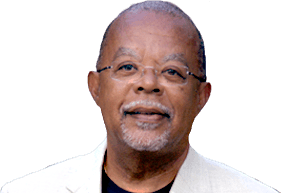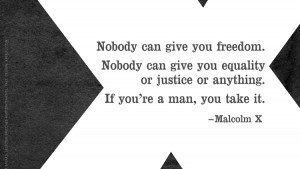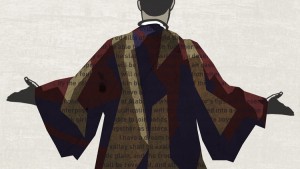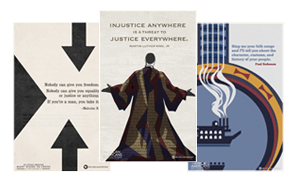Did MLK Improvise in the ‘Dream’ Speech?
Five Score and 50 Years Ago …
This year marks the 150th anniversary of the Emancipation Proclamation, issued at the midpoint of the American Civil War, and the 50th anniversary of the March on Washington for Jobs and Freedom, a moment that marked the spiritual summit of the civil rights movement. In place and time, they are joined at the Lincoln Memorial on the Mall in Washington, the nation’s shrine to the president who signed the proclamation declaring the slaves of the Confederate states free and the King who, 100 later, spoke to the disappointments and dreams of their descendants. Today, the words of both men — authors of arguably the two greatest speeches in American history, the Gettysburg Address and the “I Have a Dream” speech (pdf) — are etched in stone and in memory at the Lincoln and King Memorials in Washington.
No one understood the poetry of their parallel moments better than the Rev. Dr. Martin Luther King Jr. himself, who, speaking in front of Daniel Chester French’s iconic seated Lincoln statue, began his speech, “Five score years ago a great American in whose symbolic shadow we stand today signed the Emancipation Proclamation … But 100 hundred years later the Negro still is not free.” In this way, Dr. King framed Abraham Lincoln as the Great Emancipator and made freedom — “at last” — the ideal by which we measure progress in our country.
So effective was King in tying the memory of Lincoln to the cause of civil rights that most of us now see the Lincoln Memorial as the obvious site, the holiest of holy places, where history and racial progress meet. So, it was — it had to be — the perfect backdrop for the ultimate barrier breaker, Barack Obama, to stand on the eve of his inauguration in 2009. Yet, as we shall see, there was nothing inevitable about the choice of the Lincoln Memorial as the logical place for racial protests throughout the early 20th century, or as the staging ground for Dr. King’s most memorable speech.
Last week, we honored Bayard Rustin, the architect of the march; today, we examine the moment that remains most closely associated with it. But first, it’s important that we all understand a bit of the complicated background about the setting …
1922: A Dedication or an Opening?
The NAACP was founded in Springfield, Ill., Feb. 12, 1909, the centennial of Abraham Lincoln’s birth. Yet, at the opening of the Lincoln Memorial in Washington May 30, 1922, security guards tried to “Jim Crow” black guests into a separate section from whites, despite the presence of a black orator onstage, the president of Tuskegee Institute, Robert Russa Moton, who, in addition to serving on numerous national boards, published an annual list of blacks lynched in the United States. (Sources for this last fact include the Afro-American newspaper from June 2, 1922, and Moton’s New York Times obituary from June 1, 1940.)
The title of Moton’s speech, “The Negro’s Debt to Lincoln,” might have been the other way around (given the role of black soldiers in the Civil War), but Moton agreed to tone down his remarks to placate the Memorial Commission, as Adam Fairclough writes in his article “Civil Rights and the Lincoln Memorial.” Even then, Moton managed to slip in his view of Lincoln’s ambivalence about emancipation: “The claim of greatness for Abraham Lincoln lies in this, that amid doubt and distrust, against the counsel of chosen advisers, in the hour of the nation’s utter peril, he put his trust in God and spoke the word that gave freedom to a race.”
No mainstream newspaper covered the attempt to segregate black guests at the dedication or that 21 guests apparently stormed out. (I checked ProQuest for these facts after reading other valuable historical accounts by Scott Sandage and Christopher Thomas.) They did cover President Warren G. Harding’s keynote address, in which he sanitized the memorial as a symbol of a restored Union by telling the estimated 75,000 gathered, “Halting human slavery as [Lincoln] did, he doubtless believed in its ultimate abolition through the developing conscience of the American people, but he would have been the last man in the Republic to resort to arms to effect its abolition.”
For this reason, at least one black newspaper, the Chicago Defender, on June 10, 1922, refused to accept that the Lincoln Memorial had been dedicated in 1922. “With song, prayer, bold and truthful speech,” its editor prophetically declared, “later on let us dedicate that temple thus far only opened.”
The Rededication
African Americans, beginning with members of the AME Zion Church, started gathering at the Lincoln Memorial as early as 1926, as a Washington Post account on August 5, 1926, indicates. And on April 9, 1939 (Easter Sunday and the 74th anniversary of General Robert E. Lee’s surrender at Appomattox), the black contralto Marian Anderson fulfilled the Chicago Defender’s prophecy by giving a performance (mp3) of patriotic hymns, opera selections and Negro spirituals before a crowd of 100,000.
Martin Luther King Jr. was only 10 when Marian Anderson gave her concert. At 15, he cited her in his prize-winning speech at Atlanta’s Booker T. Washington High School: “When the words of ‘America’ and ‘Nobody Knows De Trouble I Seen’ rang out over that great gathering, there was a hush on the sea of uplifted faces, black and white, and a new baptism of liberty, equality and fraternity. That was a touching tribute, but Miss Anderson may not as yet spend the night in any good hotel in America.” Young Martin was right — the night of her concert, Marian Anderson stayed at the home of former Pennsylvania Gov. Gifford Pinchot (for a terrific account of her life and impact, see Raymond Arsenault’s book, The Sound of Freedom: Marian Anderson, the Lincoln Memorial, and the Concert that Awakened America).
Sixteen years later, by then-Dr. King would lead a bus boycott in Montgomery, Ala., that would set him on a path toward immortality and a destiny not dissimilar to the one occupied by the slain president who would be seated behind him (in stone) before a crowd of 200,000-plus marchers gathered in Washington, D.C., August 28, 1963.
Writing the Speech (Minus ‘The Dream’)
As Taylor Branch notes in his definitive narrative, Parting the Waters: America in the King Years, 1954-63, Dr. King began working in earnest on his speech with a small group of advisers in the lobby of the Willard Hotel the night before the march, and the resulting draft was “a mixture of truncated oratory and fresh composition” that was “politically sound but far from historic.” (To learn more, see King adviser Clarence B. Jones’ account in the Washington Post).
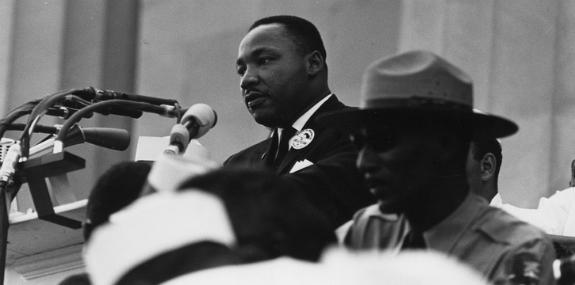
Martin Luther King Jr. addressing the audience at the March on Washington (Wikimedia Commons)
When King took the stage the following day, the audience had no knowledge of the behind-the-scenes wrangling we read about last week in the column about Rustin or that the march’s D.C. coordinator, Walter Fauntroy (future D.C. congressman), had to ring up the Justice Department to send in the Army Signal Corps to repair the expensive sound system sabotaged the day before. Imagine if they hadn’t come! (For more, see Charles Euchner’s recent book, Nobody Turn Me Around: A People’s History of the 1963 March on Washington.)
What the audience did know was that the August heat was rapidly approaching unbearable and the cavalcade of speeches, whatever their individual merits, was beginning to weary them. Still, the crowd anxiously anticipated the march’s climax, the appearance of Dr. King, whom A. Philip Randolph introduced as “the moral leader of our nation … Dr. Martin Luther King, J-R.” King approached the podium keenly aware that he was addressing not only the massive crowd gathered before him at the Lincoln Memorial, but also the millions more watching live on TV, including President Kennedy and his brother, Robert.
Working Off the Script
Adam Fairclough has pointed out that part of the power of King’s “I Have a Dream” speech came from the fact that he “framed this vision entirely within the hallowed symbols of Americanism: the Bible, the Declaration of Independence, the Constitution, the Emancipation Proclamation and the ‘American Dream.’ ” But when he started talking that day, he had not planned to discuss any dreams.
After opening with his allusion to Lincoln and “the Negro … still not free,” King turned to the novel metaphor of “the promissory note” — that the Declaration of Independence was a check of sorts written to all Americans of all races as a guarantee of their rights, but that so far, for “the Negro people,” it had been “a bad check … marked ‘insufficient funds.’ ”
In the following sections of the speech, King responded to critics across the political spectrum, including those who cautioned moderation (“gradualism,” he named it) and those who had begun calling for armed militancy and racial separation. King stressed the need for action “in the fierce urgency of now” and argued for a nonviolent, biracial approach, reminding those demanding more radical action that “The marvelous new militancy which has engulfed the Negro community must not lead us to a distrust of all white people, for many of our white brothers, as evidenced by their presence here today, have come to realize that their destiny is tied up with our destiny … We cannot walk alone.” King then encouraged Americans to continue fighting for right over might, as “we are not satisfied, and we will not be satisfied until justice rolls down like waters and righteousness like a mighty stream.”
A Speech Becomes a Sermon
Not long after delivering that now-famous line, however, King changed course. Looking at his prepared speech, he balked when he reached this mouthful of a sentence: “And so today, let us go back to our communities as members of the international association for the advancement of creative dissatisfaction.” Instead, he transformed his speech into a sermon. He instructed the audience to “Go back to Mississippi, go back to Alabama … South Carolina … Georgia … Louisiana … to the slums and ghettos of our Northern cities, knowing that somehow this situation can and will be changed. Let us not wallow in the valley of despair.”
King speechwriter Clarence Jones realized what was happening when he saw King “push the text of his prepared remarks to one side,” he wrote in the Washington Post in 2011. “I leaned over and said to the person next to me, ‘These people out there today don’t know it yet, but they’re about ready to go to church.’ ” Onstage that day, as Branch’s Parting the Waters quotes, the singer Mahalia Jackson, who had performed earlier, reportedly kept saying to King, as he spoke, “Tell ’em about the dream, Martin.” King never said if he heard her or not, but Julian Bond recently told me it would have been impossible not to, given their proximity on the stage and the resonance of Jackson’s powerful voice.
In any case, her dream was fulfilled when King continued, “Even though we face the difficulties of today and tomorrow, I still have a dream. It is a dream deeply rooted in the American dream. I have a dream that one day this nation will rise up, live out the true meaning of its creed.” In classic black preacher oratorical fashion, King then turned to repetition, outlining the specifics of his dream, which emphasized interracial cooperation across the South. Poignantly, he exclaimed, “I have a dream that my four little children will one day live in a nation where they will not be judged by the color of their skin but by the content of their character. I have a dream today!”
Soon the speech reached its dramatic climax. King quoted the first verse of “My Country ‘Tis of Thee” (the song Marian Anderson had opened with at the Lincoln Memorial in 1939; she was also there to sing the national anthem in 1963) and commanded, “Let freedom ring” in “New Hampshire … New York … Pennsylvania … Colorado,” and “California,” but also “from Stone Mountain of Georgia … from Lookout Mountain of Tennessee … from every hill and molehill of Mississippi, from every mountainside. Let freedom ring … ”
He saved his most dramatic exhortations for last: “When we allow freedom to ring — when we let it ring from every village and hamlet, from every state and every city, we will be able to speed up that day when all of God’s children, black men and white men, Jews and Gentile, Catholics and Protestants, will be able to join hands and to sing in the words of the old Negro spiritual, ‘Free at last, free at last, thank God, Almighty, we are free at last,’ ” a reference to this song. There is no better way to do justice to the delivery and effect of Dr. King’s speech upon his audience both at the memorial and in living rooms across America than to read (pdf),watch and listen.
Three months later, King explained his decision to go off-script: “I started out reading the speech … just all of a sudden — the audience response was wonderful that day — and all of a sudden this thing came to me that I have used — I’d used it many times before, that thing about ‘I have a dream’ — and I just felt that I wanted to use it here” (quoted in David Garrow’s Bearing the Cross: Martin Luther King, Jr., and the Southern Christian Leadership Conference). As inspiring as those speeches were, especially the version of the “Dream” speech he delivered in Detroit just two months before, settings matter, as Clayborne Carson, director of the Martin Luther King Jr. Research and Education Institute at Stanford, was quoted as saying in the Detroit Free Press June 22 of this year. Musical as Motown was, it couldn’t compete with “the symbolic space” of the Lincoln Memorial (though Berry Gordy officially released 45s of the Detroit speech on the same day as the March on Washington!).
Immediate Reactions
Despite its well-earned current status as one of the greatest speeches in American history, it was not universally lauded the following day. While the New York Times published a story called “‘I Have a Dream …’ Peroration by Dr. King Sums Up a Day the Capital Will Remember,” the Washington Post did not even mention King’s speech in its coverage of the march, according to Branch in Parting the Waters.
At the same time, radical activists on King’s left criticized the speech as a farce. “Who ever heard of angry revolutionists swinging their bare feet together with their oppressor in lily-pad park pools, with gospels and guitars and ‘I Have a Dream’ speeches?” Malcolm X wrote in his autobiography. All this, he added, while “the black masses in America were — and still are — having a nightmare.”
Nevertheless, King’s speech had its share of admirers, including the best-selling black writer at the time, James Baldwin, who later wrote, “That day, for a moment, it almost seemed that we stood on a height, and could see our inheritance; perhaps we could make the kingdom real, perhaps the beloved community would not forever remain that dream one dreamed in agony.”
Politicizing the Dream
The long-term importance of the march and the speech cannot be overstated. Look no further than the explosion of marches on Washington that have occurred in the years since. That such a wide variety of people and organizations have riffed upon the March on Washington by attempting to restage it is a testament to what King, Randolph and Rustin, John Lewis and the other leaders of the march achieved 50 years ago. It’s such a testament that the singular focus on King’s climactic speech (really, a few sound bites) has fostered an overly simple portrait of King himself. As Vincent Harding argues in “The Road to Redemption,” “Brother Martin spent a fair amount of time in jail, but his worst imprisonment may be how his own nation has frozen him in that moment in 1963.”
The freeze began taking hold after King’s assassination in 1968, Drew Hansen explains in his book The Dream: Martin Luther King, Jr., and the Speech That Inspired a Nation. Anxious that inner-city neighborhoods might burn, “politicians and the media [wanted] to influence the perceived direction of black protest” away from militancy and back toward the “good” civil rights movement of peaceful protest and visions of “all of God’s children … able” (and wanting) “to join hands and sing.”
The emphasis on the “dream” part of the speech especially obscures King’s later agenda. As Julian Bond once cautioned, most commemorations “focus almost entirely on Martin Luther King the dreamer, and not on Martin King the antiwar activist, not on Martin King the challenger of the economic order, not on Martin King the opponent of apartheid, not on the complete Martin Luther King.”
The speech also is too easily leveraged by political actors who surely would not have agreed with King’s message during the 1960s. For example, many opponents of affirmative action believe that the speech supports their argument; as Ronald Reagan said in 1986, “We are committed to a society in which all men and women have equal opportunities to succeed, and so we oppose the use of quotas. We want a colorblind society that, in the words of Dr. King, judges people not on ‘the color of their skin but by the content of their character’.” The estate of Martin Luther King even threatened to sue a group of supporters of Proposition 209, a 1996 California anti-affirmative action bill, when it used King’s speech in its advertisements.
The Dream at 50
We might take the 50th anniversary of Dr. King’s dream not only to focus on the progress that has been made since 1963 but also to think more about his larger goals and aspirations to fix problems even more vexing than de jure segregation, problems such as wealth discrepancies between blacks and whites. You can begin by reading the text of the speech itself (pdf), and then turn to his collected writings. You might also make time to visit the Lincoln and King memorials in Washington and marvel at how Dr. King turned Robert Russa Moton’s 1922 “dedication” speech, “The Negro’s Debt to Lincoln,” into “The Nation’s Debt to the Negro,” a promissory note that remains unpaid for so many, while inspiring other minority groups to demand payment on theirs. It is a never-ending story of prophecy and protest, the noblest of our American traditions. It is also a stirring example of how African Americans reclaimed the Lincoln Memorial from Jim Crow and made it the ultimate American symbolic space for calls to redress grievances and effect progressive change in a truly democratic society.
Fifty of the 100 Amazing Facts will be published on The African Americans: Many Rivers to Cross website. Read all 100 Facts on The Root.
Find educational resources related to this program - and access to thousands of curriculum-targeted digital resources for the classroom at PBS LearningMedia.
Visit PBS Learning Media